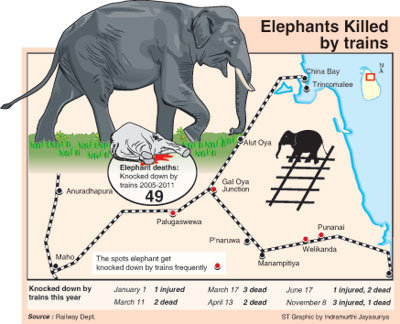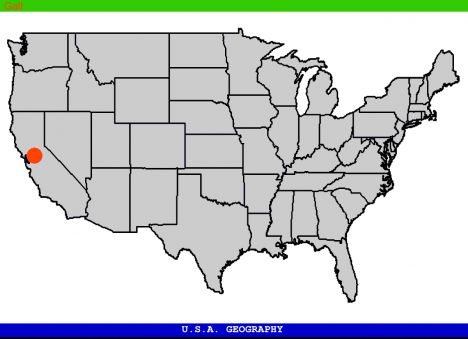In my mailbox a couple of days ago, was mail from a law firm in Boston, representing PAWS and Le Petit Cirque, with the subject:Cease and Desist: Defamatory Postings and Copyright Infringement. For anyone who never heard of PAWS (Performing Animals Welfare Society), its a "animal sanctuary" up in Galt, northern California, USA, owned by Pat Derby and Ed Stewart, and in spite of its impressing incomes, its refered to as a non-profit. Obviously some of their funding is used to pay lawyers: The mail I recieved from PAWS lawyers, contained a pdf document with the following:
Apart from a lot of irrelevant text masses in this document, comes the first written confirmation from PAWS that several of their elephants suffer from TB. The document does not only mention the elephant, but it says the elephantS that suffer from TB etc...
Obviously the lawyer doesnt have a clue what he is talking about. I guess, during his studies, that he never specialized in Tuberculosis, or how it can be diagnosed on elephants. He may be excused, and I also think hes doing his job, and need to earn his money. He probably believe that PAWS tell truth.
The people who gave money to PAWS, so PAWS can sue as many people they want, are also excused. They belive that they are doing something good, saving elephants and saving the world, by giving an organisation money, although the organsation wants more elephants to come to their TB-infected facility. Together with those elephants will also more money come. And more power.
PAWS are not, and can never be, excused. They must, or should know, that within their group of elephants, maybe, or rather probably, all elephants are infected, even if they can not confirm this by tests. All present elephants has during the years been mixed with each other, and two has been TB positive during autopsy. Tuberculosos is known to be carried away over distances, and in The Elephant Sanctuary, where they argued that the founder Carol Buckley kept "the highest standard" etc in the TB monitoring, some years later 9 of the TES staff tested positive, including 3 from administration building. Shortly after this, Mrs Buckley was dismissed from TES.
The owners of PAWS, as well as Mrs Julie Woodyer from ZooCheck Canada, and Toronto Councillor Michelle Berardinetti, (who according to some sources may have a background as animal rights activist and associated with ZooCheck) are the only people I can find that claim that PAWS elephants are free of TB. None of those three persons, to my knowledge, are veterinarians.
Julie Woodyer is against zoos in general, and has been campaigning many years to move Canadas elephants to any of the TB infected sanctuaries in U.S.A, which gives an interesting indication about how much she in reality care for those elephants healths. Here she says "I would recommend Sumac to charities large and small
who
want an easy transition and a user friendly database that will meet all
of your fundraising needs." Without fundrasing ZooCheck Canada wouldnt exist, and in order to get fundings, ZooCheck must exploit animals in a way, so people gets motivated to send them money.
Berardinetti, more or less repeats Julie and PAWS words like a parrot, and pretend for the Toronto citizens that she is some sort of elephant expert, and PAWS, as owner of a sanctuary which is a BIG money industry, does not want their sanctuary to be closed down from public visitors.
Those three people, has to my knowledge, not found one single veterinarian, having insight on elephant TB, that back up their personal ideas about TB on elephants. From my point of view, its totally amazing, that the local Police does not move their butts into their vehicles, drive to TB-infected sanctuaries like this, ask for the keys to the gate, and close them completely for visitors.
Any person with common knowledge of animals, would understand that this is not a place to send healthy elephants. A person with minor intellectual capacity, would understand that its not a suitable playground for children. And that parents to those children have any reason to be upset, if, or when they get information that their children has been inside elephants stables, on a location where animals possibly suffer from Tuberculosis and that at least 2 elephants during the last 2 years tested positive.
Le Petit cirque is a pretty unknown organisation to me, why I will wait to discuss them.
All I can say is that I saw the picture with their performers playing around in PAWS elephants stables, which for many reasons doesnt seem to be the best place, in July this year!!
I became of course upset, and on an old blog I did in January, called Tuberculosis in two U.S. elephant sanctuaries, I copied the picture, and made the following remark:
And should the elephant stables really be a playground for children and youths?
JULY 29, 2012: Le PeTiT CiRqUe'S HUMANITARIAN cirque company of kids visited the Performing Animal Welfare Society's Incredible 23,000 sq.ft sanctuary and learned about the incredible animals they are performing for at the AVALON THEATRE on Sept-30. Since all of our productions are humanitarian based, the youths learned about these animals and where they were rescued from
Did the youths and their parents also learned about the lethal zoonosis infection elephants from those stables are carrying?
Only hours later, PAWS lawyer send me the mail with the letter above. The lawyer is not only refering to the lines about my worries for the children and youths health situation, but also asking me to remove text concearning PAWS from my websites. I guess they are refering to the following:
 After my blog in January 2012 it is now confirmed that 2 U.S. elephant "sanctuaries" are now Tuberculosis infected, The elephant sanctuary in Tennessee, and PAWS in northern California. PAWS want more elephants, so their funds from the public can increase! Please search as much information you can find regarding the planned translocation of 3 healthy african elephants from Toronto Zoo to PAWS "elephant sanctuary" in NORTHERN California. The picture shows Nicholas, PAWS Asian bull elephant, walking in the snow. It is not known if PAWS are following the The AZA 40 degrees F rule. It seems like the elephants can choose as to stay inside or outside. Last year the Bull Sabu died, officially of "severe arthritis", however PAWS in their newsletter wrote one year before: Prince and Sabu, both retired performing elephants, are in good health so we expect them to be with us for a very long time. In this PAWS newsletter it also mentioned a very cool and rainy spring. PAWS and ZooCheck Canada have tried to hide that Sabu was also suffering from Tuberculosis. The U.S. Department of Agriculture also found that two other elephants that died at PAWS within the past two years also tested positive for [tuberculosis] TB, according to necropsy reports. Please sign the petition asking Toronto City Council, to terminate the Agreement with PAWS, and let professionals decide about Toronto elephants whereabouts!
After my blog in January 2012 it is now confirmed that 2 U.S. elephant "sanctuaries" are now Tuberculosis infected, The elephant sanctuary in Tennessee, and PAWS in northern California. PAWS want more elephants, so their funds from the public can increase! Please search as much information you can find regarding the planned translocation of 3 healthy african elephants from Toronto Zoo to PAWS "elephant sanctuary" in NORTHERN California. The picture shows Nicholas, PAWS Asian bull elephant, walking in the snow. It is not known if PAWS are following the The AZA 40 degrees F rule. It seems like the elephants can choose as to stay inside or outside. Last year the Bull Sabu died, officially of "severe arthritis", however PAWS in their newsletter wrote one year before: Prince and Sabu, both retired performing elephants, are in good health so we expect them to be with us for a very long time. In this PAWS newsletter it also mentioned a very cool and rainy spring. PAWS and ZooCheck Canada have tried to hide that Sabu was also suffering from Tuberculosis. The U.S. Department of Agriculture also found that two other elephants that died at PAWS within the past two years also tested positive for [tuberculosis] TB, according to necropsy reports. Please sign the petition asking Toronto City Council, to terminate the Agreement with PAWS, and let professionals decide about Toronto elephants whereabouts!
PAWS is also closely associated with the animal rights people who are against zoos, and plan to setup an "elephant sanctuary" in europe, which, if it comes to reality, also will be dependant on funding from AR people for its existence, and maybe using "Noble Cause Corruption" methods.
I guess many people would be scared if they got a document like the one above, with threats sent from a lawyer. I was puzzled for some days, and decided that Im not, and will never be scared of people that are trying to hide facts, and scare critical people to be quiet. Especially if they are red haired, and looks like they have problems of moving their body because of their body weight.
This woman may have rich people giving her money, but they will never have so much so they can buy my silence. And Im sorry, but I worked a couple of animals with larger teeth than her lawyers...
This is not the first time that PAWS is engaged in law suits, contrary, this seems to be an important part of their activities. "PAWS continues to waste its contributors' money pursuing ridiculous litigation," said Stockton attorney Dean Ruiz, representing two clients who won a case against PAWS last year. "If I was a donor, I'd want my money back."
In 2002, PAWS spent $67,000 in legal fees, according to its income tax return.
Source (2003) : Along with success, PAWS faces legal, financial challenges
 |
| Pat Derby with elephants |
Yes, you read right, In 2002, PAWS spent $67,000 in legal fees, according to its income tax return.
In one lawsuit, PAWS sued John Ham, who lives on property next door to ARK 2000 west of San Andreas, Ham's friend, Kevin Krantz, and Frank Eckblom, publisher of the Calaveras County Daily News, in 2002, claiming that they defamed and harassed PAWS.
However, in September 2002, David L. DeVore, a visiting judge from Alpine County, threw out the lawsuit, saying that Ham, Krantz and Eckblom were exercising their First Amendment rights regarding a public matter. PAWS still owes Ham and Krantz about $7,000 in court and legal costs, and it owes Eckblom about $10,000, said Ruiz, who represents Ham and Krantz.
"We're still awaiting payment on the attorney fees order," Ruiz, said.
"People who send us donations continue to do so," Derby said. "People who join PAWS and donate to PAWS believe in what we do."
I have been thinking on the person that did such a thing, using the money from her supporters, in order to rush to a laywer, in order to try to scare me to be silent, obviously a habit of hers.
Not everyone has that sort of golden pockets, so they can make use of laywers as an argument and it becomes very clear, that all the money is from PAWS supporters, and that Pat Derby realized an alternative way to exploit animals, which gives less work, than working as an animal trainer.
- Why is their organisation not transparent?
- Why are they attacking zoos and circuses?
- Why are they attacking their neighburs?
- Why are they trying to scare me with their lawyers?
- What do they hide?
























